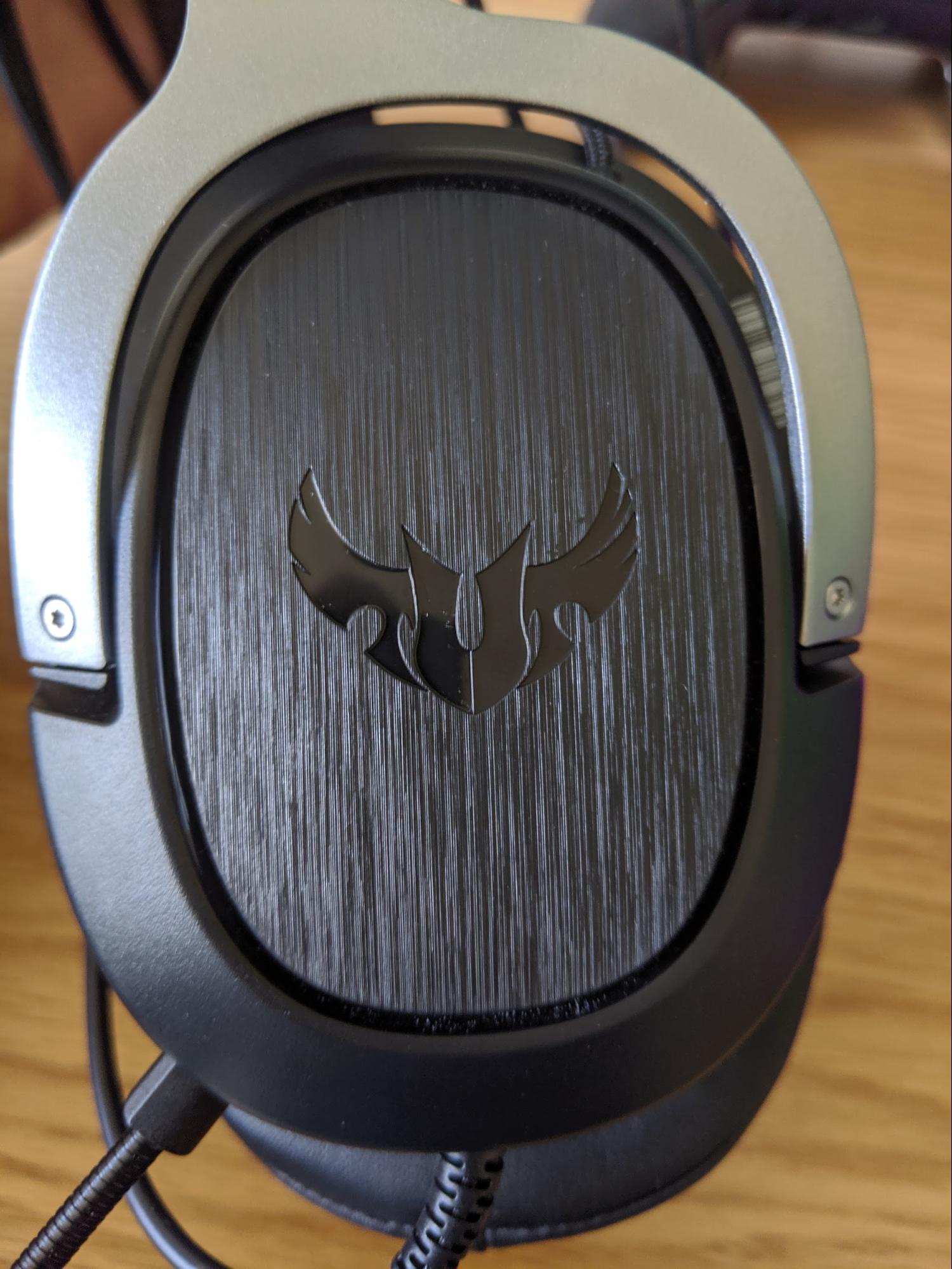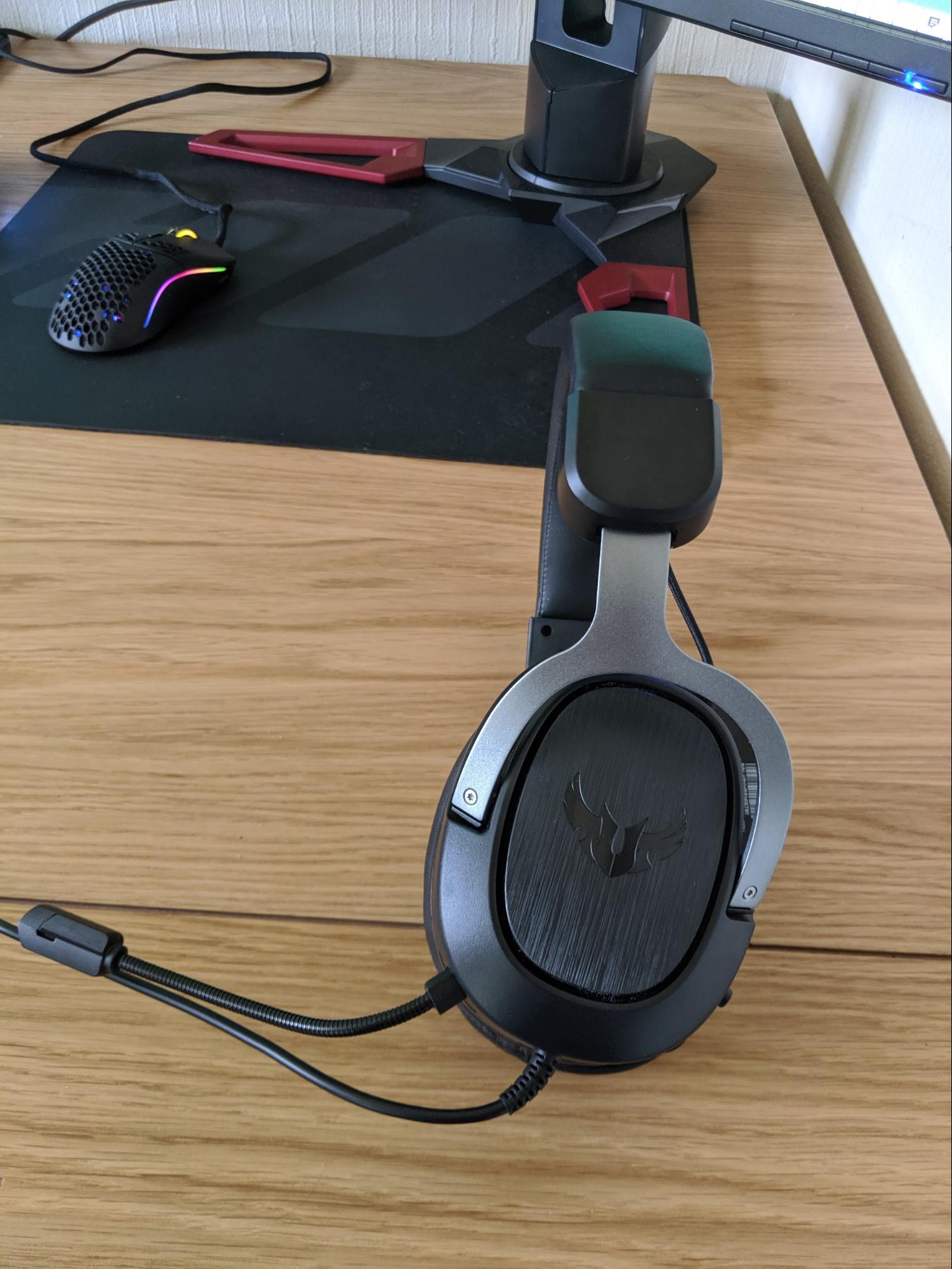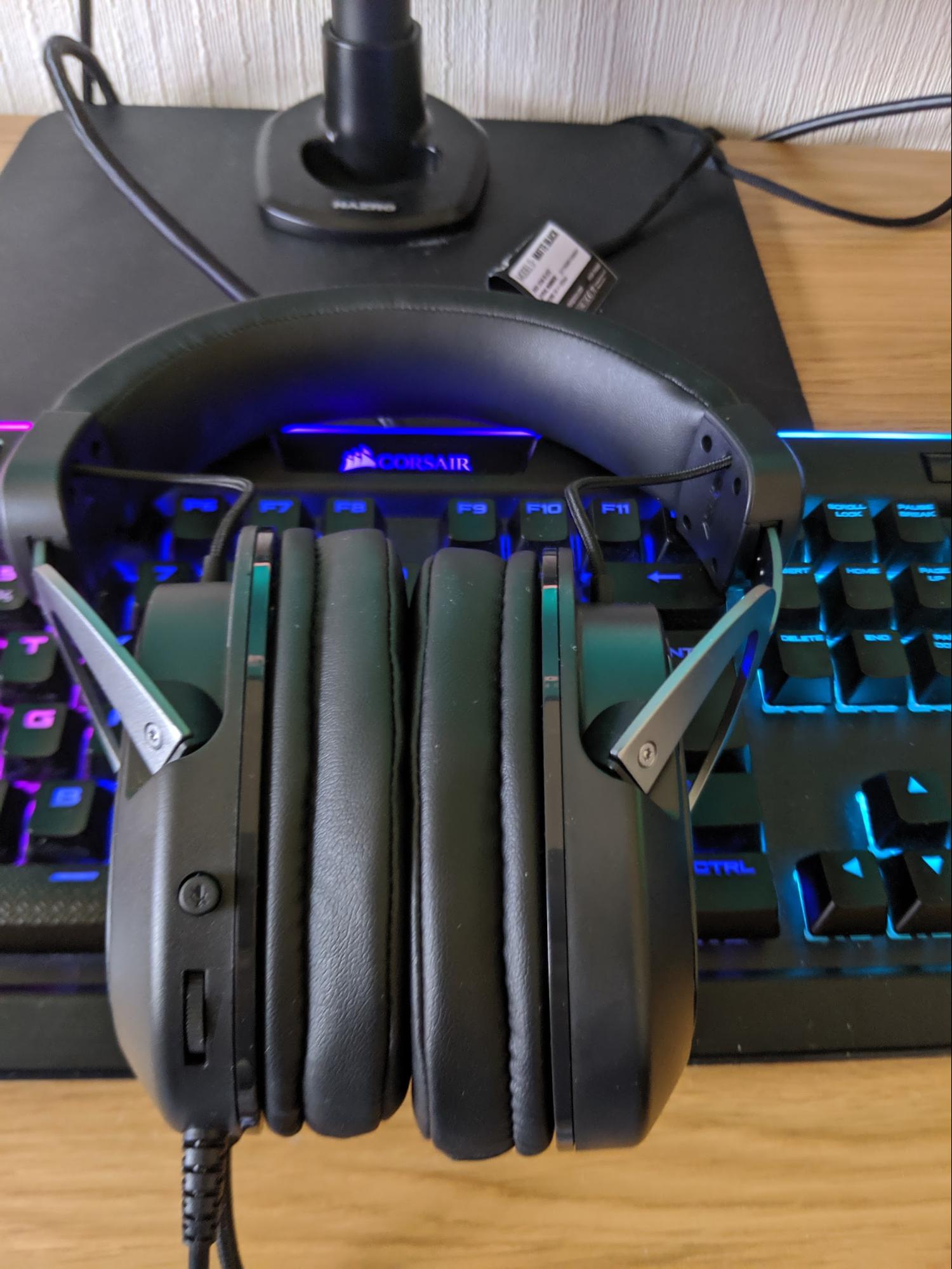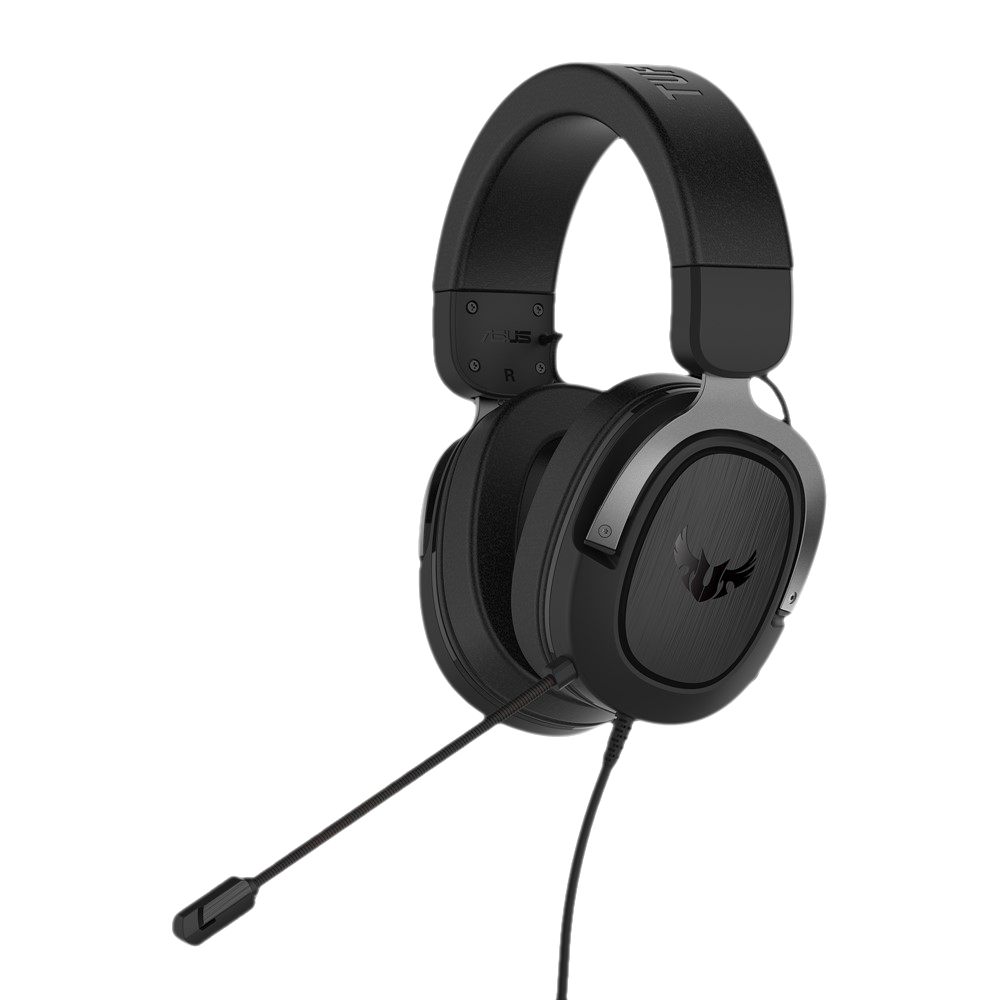Tom's Hardware Verdict
The Asus TUF Gaming H3 shines with a cozy fit and audio that sounds great for gaming without the need to tweak. It even rivals more expensive headsets, like the Asus TUF Gaming H7.
Pros
- +
Impressive out-of-box sound quality
- +
Incredibly comfortable
Cons
- -
Questionable build quality
- -
Advertised virtual 7.1 surround sound is Windows Sonic, usable by any 3.5mm headset
Why you can trust Tom's Hardware
If you want to see where the innovation and rapid iterations are happening in the headset market currently, sort your search results from low to high. While I've yet to find a sub-$50 model that entices me to throw the SteelSeries Arctis Pro Wireless I typically use in the trash, the overall trajectory of quality's on the up. A couple of years ago, you had to make substantial compromises in construction, sound, features or all of the above for a headset that's $50 or less, but today the drawbacks are far subtler.
Enter the Asus TUF Gaming H3 with support for PC, Mac, PlayStation 4, Xbox One and Nintendo Switch. It's an unassuming headset and a lower-priced alternative to the Asus TUF Gaming H7. There's nothing on the spec sheet to really grab you by the collar and demand attention over the best gaming headsets. 20Hz-20KHz response? Yawn. 50mm drivers? Far from a reliable barometer of sound quality. But with how this headset feels and how good games sound without having to fuss with the thing, you'll think twice before spending more.
Asus TUF Gaming H3 Specifications
| Driver Type | 50mm neodymium |
| Impedance | 32 Ohms |
| Frequency Response | 20Hz-20KHz |
| Microphone Type | Unidirectional electret condenser |
| Connectivity | 3.5mm |
| Weight | 0.6 pounds / 294g |
| Cord Length | 6 feet / 1.8m |
| Lighting | None |
| Software | None |
Design and Comfort

This H3 is absolutely nothing like the pricier H7 in its appearance. While the H7 opts for oversized, round earcups and stitched accent colors around the headband, this is an all-black, elongated, mixed-material affair. The gloss "TUF" logo inlays on each ear cup and "TUF GAMING" text along the headband are the only visual similarities.
It's also a tale of opposites when it comes to material feel and construction quality. The H3's build quality is the sole weak point in the overall package. While we were reassured by the H7's sturdy material choices and smart finish, these H3 cans do look and feel tangibly cheaper. The leatherette headband doesn't fill me with confidence, considering how much it bends and squeaks under pressure and the sensation of it being slightly under-stuffed. The aluminum headband underneath keeps the whole thing together, while brushed aluminum hinges connects the headband to the earcups and feature generous inward adjustment, although, not much resistance. They feel slightly loose, but this isn't a problem once you have them over your ears.
The elongated circular ear cup shape's finished in a leatherette contact pad which, like the headband, feels like it could use a more foam in there, and a simple volume scroll and mic mute button occupy the rear-left earcup. The scroll wheel's easy to locate when your mind's occupied with headshots, control points, hardpoints or safe zones, and there's a good degree of precision in it too. The mic mute switch doesn't feel like it's going to last many years, though, and on our test model it proved quite tricky to fully depress. Finishing it all off, a non-braided cable connects to the PC via a 3.5mm connection.
Once you accept the H3's lacking build quality, things start getting better, starting with the moment you put it over your ears. This might just be the most comfortable budget headset on the market at the moment. The weight's not insubstantial at 0.6 pounds (294g), but it's displaced nicely by the wide headband. Plus, the level of force keeping the earcups in place over the ears is just about perfect. That elongated circle design is also much more comfortable around the ears than the H7's perfectly round earcups. Coupled with that leather finish it makes for an incredibly snug fit. If you're a fan of the feel of the HyperX Cloud and its siblings, like the HyperX Cloud Mix, you'll be right at home with the H3. It also does a brilliant job at passive noise cancellation, so if you tend to play next to a noisy fan-filled PC, a screaming, neglected offspring, or a train line, these are your cans.
Due to the fact the earcups don't fold inwards and there's no carrying case, these aren't easily transportable cans. But who cares with this level of comfort and sound quality, which we'll get into now.
Get Tom's Hardware's best news and in-depth reviews, straight to your inbox.
Audio Performance

More pleasant news: the H3 sounds wonderful. It's certainly not a flat response akin to studio monitors, but the 'dipped' EQ here exaggerates the bass and high frequencies without compromising clarity or pushing the EQ shape so far that it sounds artificial. You get a sturdy low-end response in games, movies and music and a perfectly usable mix for competitive games like Counter-Strike:Global Offensive (CS:GO) and PlayerUnknown's Battlegrounds (PUBG) without having to switch between profiles, turn surround sound on or off, or any other messing about. The all-important footsteps and weapon-switch sound cues cut through, and there's no need for a special 'gaming' mode, as other headsets employ.
I think a lot of the sound quality's success comes from its comfortable fit. Because the sound isn't leaking out anywhere around your ears, low-end resonant frequencies are voiced in the snug chamber around the ear without losing power. And the leatherette contact point material only helps that cause, creating a seal, rather than a breathable mesh.
A word on the headset's virtual 7.1 surround sound. Note that this feature that doesn't mean it's permanently running Dolby DTS Headphone:X or any other surround algorithm. In fact, since this connects via 3.5mm rather than USB and, thus, can't be tweaked using Asus software, that'd be a problem if it were the case. You'd be stuck listening to everything -- songs, TV shows, 2D indie games about having a lovely cup of tea -- in that artificial-sounding surround. What virtual surround sound actually refers to here is the ability to use Windows' own spatial audio, Windows Sonic, to emulate surround sound. But you can do this with any 3.5mm headset, and we find DTS Headphone:X to be much more preferable to Windows Sonic.

Onto microphone performance. There's an unusually long microphone on the H3, and it isn't detachable, so I found I had to position it lower than normal to keep it out of my sight line. Despite being a bit further away from my mouth during VoIP chat as a result, the H3's mic did the job well, cutting through the mix, cancelling out a good deal of background noise and compressing the vocal signal for clarity.
For a headset of this price, you're not likely to get a game/ChatMix control, but that is a feature I miss whenever testing a headset without one.
Bottom Line
If you're scanning the market for an affordable headset, the Asus TUF Gaming H3 should be your new first port of call. Sound and comfort are paramount anywhere along the pricing hierarchy. The headset excels at both to such a degree that, frankly, I'm surprised to see them placed lower in the pecking order than the more expensive Asus TUF Gaming H7.
You won't win any beauty contests with them on, and my suspicion is that a few drops or knocks might start to reveal the lower quality construction materials.
But if you can make peace with that, you've got a real bargain on your hands.
